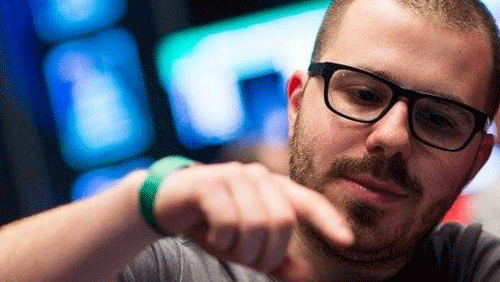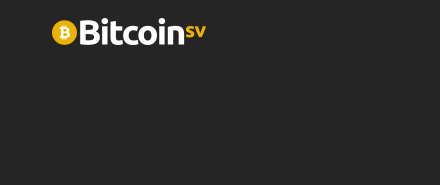Dan Smith helps to raise $1.7m in donations for ten different charities giving rise to the question: why don’t more people give publicly?
 How ironic that I became interested in charitable giving in a bid to become rich. At the heart of my decision to help others was a selfish desire to help myself.
How ironic that I became interested in charitable giving in a bid to become rich. At the heart of my decision to help others was a selfish desire to help myself.
2009, and my life was in turmoil. I quit alcohol to save my marriage, and my wife asked for a divorce. I gave all of my possessions to a friend, moved in with my parents, and ploughed eyeballs first into as many self-help books as I could find. And it was within the pages of these books that I first developed my get rich not so quick mentality.
“Many of the world’s richest individuals and most successful people have been devout tithers. By tithing regularly, you can put into motion God’s universal force, bringing you continual abundance.” Jack Canfield.
Continual abundance.
Roughly translated that meant earning a lot of money.
I didn’t believe in God.
Who cares? I was in.
There was only one problem.
I didn’t have any money to give.
Dan Smith Helps Raise $1.7m For Effective Charities
In November, Dan Smith announced a charity drive where he would match $175,000 in donations to a group of carefully selected initiatives designed to reduce suffering in the world.
An anonymous donor then came forward to match a further $125,000 should that $175,000 be matched – increasing available matched funds to $300,000. Daily Fantasy Sports (DFS) player Martin Crowley matched that $300,000 and a further 134 different people, including Martin’s brother Tom (who donated $500,000) got involved in the action raising $1.7m for ten different charities.
“Money is like manure. If you spread it around it does a lot of good. But if you pile it up in one place it stinks like hell.” Junior Murchison
It’s the second time that Smith had aired his charitable giving publicly- the first being a matching challenge alongside Dan Colman. The pair raised $210,854 for the Against Malaria Foundation, Deworm the World, the Massachusetts Bail Fund, and the Machine Intelligence Research Institute.
It seems that raising public awareness is an effective way of raising more funds – a point Smith touches upon in his personal blog:
“There is a social stigma about donating publicly, but I don’t really understand why. I think people tend to romanticize the idea of sacrifice, when it makes more sense to focus on results. If you convince someone else to donate to a cause you believe in, that can make a very real difference. That seems much more relevant to me. Logically, it seems clear to me that being public about donating encourages others to donate.”
Raising For Effective Giving – Member #1
Dan Smith and the Crowley brothers use Raising For Effective Giving (REG) as their charitable vehicle. I’m REG member number one, meaning I was the first to sign up and start donating. I began giving 2% of my gross income to REG, with a plan to increase by 1% annually.
Talal Shakerchi was my biggest influence, not in the realm of effective altruism, but his drive to donate 100% of his income to help reduce suffering in the world. That was my target. One day, I wanted to be in a position to donate everything to effective charities.
The 2% payments began in 2014, and by this time I was five years sober. My life had gone through incredible changes; my desire to reduce suffering had taken on an entirely new meaning. Becoming financially abundant off the back of giving wasn’t part of the vision, but I still had a desire to be rich so I could give more.
Donating felt good. Animal Charity Evaluators and the Against Malaria Foundation personally thanked me. I started to raise awareness of REG and Effective Giving in the media. I began to consider ways in which I could get recovering addicts to donate as I believe ‘service’ work is a positive way of getting through the doldrums that accompany the severing of an intimate relationship.
In 2015, I increased my donations to 3%.
In 2016, they rose to 4%.
I was on course.
And then life took an unexpected twist.
The Social Stigma About Donating Publicly
As we both squeezed our butts onto the toilet seat – my wife’s wee dribbling down my index finger – neither of us knew what the blue cross on the pregnancy test kit meant?
It was Google who told us we were pregnant.
The blue cross changes everything, even more so when your focus is on giving as much as you can to other people’s children. It was time to think of mine. We left our crummy little apartment and moved into a more expensive pad in preparation for the birth of baby Zia.
I also decided to quit live reporting so I could spend more time with my teenage son. It all crept up on me, but before I knew it, I wasn’t earning enough to cover my expenses. As each month passed, I was eating away at my Emergency Fund. I had two choices: cut the cloth or earn more money.
And that’s where I am, today.
I am trying to reduce costs, and increase revenue.
And my 4% had suddenly gone from being a necessary good to a cost that needed cutting.
I felt an incredible feeling of shame. I still struggle to shake it, today. I had been so vocal about giving to others and fighting materialistic attitudes, and here I was unable to give to others less fortunate because I had decided to buy a bigger house.
There were so many times that I rued the day I decided to donate publicly. If I had given in secret, nobody would have known. And there were so many questions.
Why Donate in the First Place?
Why was I donating?
Was it to make me feel good?
Was I writing about it because my self-esteem needed a massage?
When I asked myself these questions, I think there was an element of truth in them, although my values around giving had certainly elevated their importance in my personal hierarchy.
I was addicted to the rush that giving was providing.
It felt good to do good.
I spoke to Talal about my dilemma. He was surprised that I was feeling so depressed. As far as he could tell, I was doing a great job serving others. He reminded me that I was one of the most vocal supporters in the media, and spent all my spare hours helping people quit alcohol and other debilitating addictions.
“There are many ways to help others and you seem to be doing a great job,” said Talal.
My conversation with Talal helped. My wife and I decided to donate 5% of all income earned through Needy Helper (my business that helps people reduce the leverage alcohol has on relationships), and we started giving 1% of our personal gross income with the plan to increase by 1% increments, annually.
By being public about my struggles, in the same way, Dan has been open about his donations, I hope my story reaches a few like-minded souls. The only downside to being public about my donations was a hit to the ego. Had I not been public in my support of REG and Effective Giving, who knows, perhaps I wouldn’t have felt shame and sought out the advice of Talal.
It turns out that Jack Canfield was right.
Giving has provided me with incredible abundance only it’s not arrived in the form of cash. In Korea, they celebrate the 100 day birth of their children. Known as Baek-Il, the celebration is because in the past few children made it past this date because of a lack of medicinal knowledge and harsh living conditions. I celebrated my daughter’s Baek-Il yesterday.
In the West, we take 100 days for granted. Elsewhere, children die every second well before that date. There is abundance everywhere. I just had to learn to look further than my own wallet.





